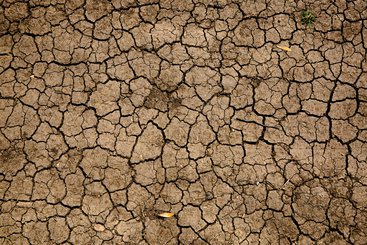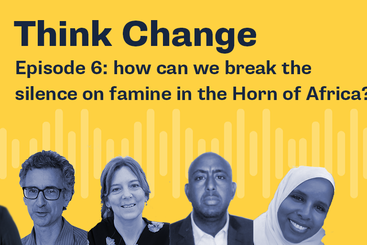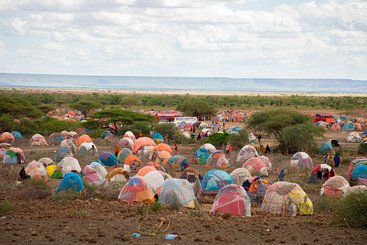Somalia is facing a crisis, which needs many solutions. Nature-based Solutions could be part of the puzzle.
Since the early 1990s, people of Somalia have been continuously exposed to climate risks and multiple hazards – namely protracted drought, food shortage and famine, armed conflict and forced displacement.
The terrible impact of these crises has been felt across the country and beyond, but Somali people living in rural and conflict-affected areas have experienced the most devastating consequences. Hundreds of thousands of people lost their lives to periodic famines or to the armed conflict, millions were forced to migrate, and at the same time, critical natural resources such as water, land and biodiversity have been lost or degraded at an alarming rate.
Protracted droughts have become more intense, frequent and unpredictable. Drought incidents, which used to occur every eight to ten years, are now happening every four to five years or even more often. The last major incident struck in 2011 and it triggered a widespread food shortage, followed by famine, killing more than 258,000 people and leading to mass migration internally. Since then, drought has struck twice – in 2017 and the current crisis that began in early 2020. Rising mean temperature in the medium to long-term means more unpredictable rainy seasons to come. Despite the increasing climate risks and multi-hazards and very hard lessons over the last three decades, the decision-makers, within the country and outside, have learned little on how to address these risks and threats more effectively in the future.
As of October 2022, five consecutive rainy seasons had failed, creating a very tough climatic condition for millions of farmers and pastoralists in Somalia. Most of the country is under severe drought, crop production has failed and livestock production has diminished rapidly over this period. The climate risk exposure also compounded with other hazards including the Covid-19 pandemic, lack of remittance flows and poor animal health. Due to the cancellation of the Hajj pilgrimage, livestock exports were reduced to zero, and at the same time the flow of foreign remittances into the country drastically reduced. To make matters worse, in 2020 the Horn of Africa faced the worst plague of locusts in 25 years, resulting in a complete destruction of crops and pastures. Rural and pastoralist societies are the most badly hit by such unprecedented loss and decline of natural capital goods and services. A major source of income in rural Somalia has disappeared.
The failed rains have pushed almost half the country’s population (7.8 million) into facing severe water shortages. All these events have resulted in multiple humanitarian crises such as the displacement of 1.6 million people, an acute food shortage for 4.3 million, and a lack of safe water for 6.4 million. This acute food shortage has been particularly felt in the drought-hit central and southern region of the country. While a robust response from the international community has yet to match the unfolding humanitarian crises in the country, long-term climate adaptation measures are either stalled or lagged far behind, mainly due to inadequate climate finance to such a fragile and conflict-affected state like Somalia.
Because of its arid and semi-arid climatic setting, Somalia’s natural capital – particularly water, cropland and biodiversity – are scarce and thus extremely valuable to both the country’s economy and people’s wellbeing. The country comprises only 1.8% of arable land, 10.5% forest land and 87.9% is other land, including degraded grazing land. Pastoralism is the predominant land use system, more than 60% of the population depends on pastoralism-based livelihoods, and livestock exports accounts for over 80% of foreign exchange earnings. However, recurrent droughts and inappropriate land use systems as well as the illegal exploitation of forest resources (for charcoal production) are all accelerating the loss and depletion of Somalia’s unique natural capital in an unprecedented way.
The situation is further exacerbated by internal conflicts and political instability, which heightened unfair competition for dwindling resources like forests and pastureland, and created further tension and distrust among ethnic groups, and between the state and local institutions. The formal institutions are either absent or ineffective in remote and conflict-affected areas, whereas informal institutions such as traditional and clan-based management practices are also rapidly diminishing.
Poor and vulnerable people are the most affected by these continuing crises. Securing their sustainable future under climate risks and natural capital depletion should be the utmost priority for everyone. Both policy-makers within the country and development partners from abroad should focus on long-term adaptation priorities that can deliver strong development benefits, and some of them include supporting farmers with drought-tolerant crops and improved livestock breeds, developing agroforestry systems and crop diversification and improved access to climate finance. In such a fragile, poor and vulnerable condition, adaptation policies must also address trade-offs between different adaptation priorities to avoid a danger of reinforcing inequality and social vulnerability.
In the face of a mounting climate risks and environmental degradation, the long-term view is critically important. It will necessitate a shift from single action or crisis response approach to a long-term and more integrated actions which can transform the resilience capacity of poor and vulnerable people. Nature-based Solutions (NbS) such as water harvesting, incentivising climate smart agriculture and protecting intact forests can be approaches with multiple short- and long-term benefits.
These are also highlighted by the country’s climate policies such as Somalia’s Nationally Determined Contribution (NDC), but implementing such measures at scale will take a while. The country needs multiple solutions to address this long-term crisis, and NbS must be part of the response now, so the next generation will have a much better resilience capacity to adapt to climate risks and multiple hazards.



